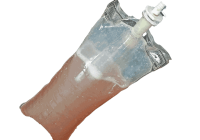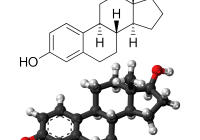The Effect of Uterine Interference on Reproductive Function in the Mare An unpublished manuscript written in 1976 by John R Newcombe and W E Allen, Royal Veterinary College University of London Introduction It has been shown in several recent reports that irrigation or infusion of the uterine lumen of the mare during the luteal phase of the oestrous… Read More »
US CEM Outbreak – Update The CEM outbreak in Florida continues to produce new cases. The initial animal was a mare identified following breeding in May. Tracebacks commenced and to date there are a total of 43 cases, which include 16 domestic ponies (2 stallions, 1 mare, and 13 geldings), 14 riding horses of various breeds (all geldings),… Read More »
Unpublished Research Articles from Professor John Newcombe, BVetMed, MRCVS We were delighted – honoured to be asked – to present some previously unpublished and summarized research articles from Professor John Newcombe. The author is a world-renowned expert in the field of equine reproduction, with a list of peer-reviewed published works well in excess of a hundred. In association… Read More »
Repeated Embryo Loss in Mares is the Result of Retarded, Small for Age, Embryonic Vesicles. By Professor John Newcombe, BVetMed, MRCVS A Normal Foetus and then a Foal Will Eventually Result When a Normal Embryo is Produced: A Case Report ABSTRACT A twelve-year-old maiden/barren part-TB mare with otherwise limited reproductive history, was sent to an equine fertility clinic… Read More »
CEM Identified in Florida “A mare in Florida (FL) has been confirmed culture positive by the USDA APHIS National Veterinary Services Laboratories (NVSL) for Taylorella equigenitalis, the bacterium that causes contagious equine metritis (CEM). The affected mare, the breeding stallion, and one other mare are under quarantine. A comprehensive epidemiological investigation is being conducted including traceback and history… Read More »
The last completed cycle (IOI) of the year before a phase of extended winter anoestrus is significantly longer than the midsummer IOI in each mare By Professor John Newcombe, BVetMed, MRCVS Abstract Data held at a Clinic at latitude 52°N was examined retrospectively to determine the length of the last Inter-ovulatory Interval (“IOI” – “cycle”) preceding a period… Read More »
Clean Culture and Cytology – Perhaps Not So Clean? For many years, the standard pre-breeding evaluation included a uterine swab culture alone. It was then determined that allegedly “clean” mares were not becoming pregnant, and further investigation showed that there were inflammatory cells present in the uterus, indicating some sort of irritant – usually a pathogen missed with… Read More »
Horse Breeding Short Courses and Tuition from Equine-Reproduction.com Imitated by some – duplicated by none! These courses are considered by many to be the most complete single equine reproduction short course and tuition available. 2026 Course Dates to be Announced Shortly! 2026 Spring Equine Reproduction Short Courses are Now Completed! Please check out our one-on-one individual tuition program!… Read More »
Diagnosis of Placentitis – Are Inflammatory Markers Useful? Placentitis is – literally and practically – “inflammation of the placenta” (“itis” as a suffix indicates inflammation). Use of assays for inflammatory markers in the mare – in particular Serum Amyloid A (SAA) – have been previously suggested as possible diagnostic tools for use in the identification of placentitis. Inflammatory… Read More »
Can Mare Temperature Changes Predict Ovulation? Temperature changes to predict ovulation are used in multiple species, including humans. The question has been asked of the mare in the past, Bowman et al. identifying a drop in temperature using a temperature-reporting microchip following ovulation which occurred in the period from midnight to 9:00 am. Diurnal fluctuations were also observed,… Read More »











